Abstract
During ethylene biosynthesis, the H3CS- group of S-adenosylmethionine is released as 5′-methylthioadenosine, which is recycled to methionine via 5-methylthioribose (MTR). In mungbean hypocotyls and cell-free extracts of avocado, [14C]MTR was converted into labeled methionine via 2-keto-4-methylthiobutyric acid (KMB) and 2-hydroxy-4-methylthiobutyric acid (HMB), as intermediates. Incubation of [ribose-U-14C]MTR with avocado extract resulted in the production of [14C]formate, indicating the conversion of MTR to KMB involves a loss of formate, presumably from C-1 of MTR. Tracer studies showed that KMB was converted readily in vivo and in vitro to methionine, while HMB was converted much more slowly. The conversion of KMB to methionine by dialyzed avocado extract requires an amino donor. Among several potential donors examined, l-glutamine was the most efficient. Anaerobiosis inhibited only partially the oxidation of MTR to formate, KMB/HMB, and methionine by avocado extract. The role of O2 in the conversion of MTR to methionine is discussed.
Full text
PDF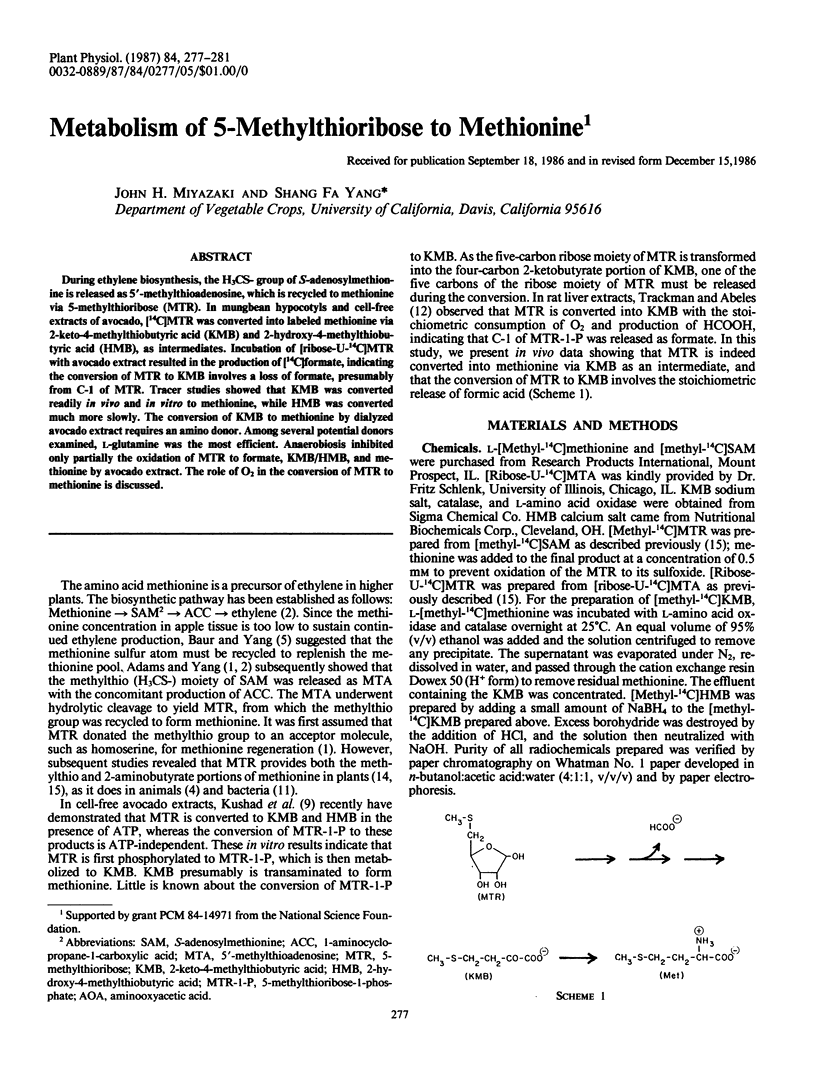
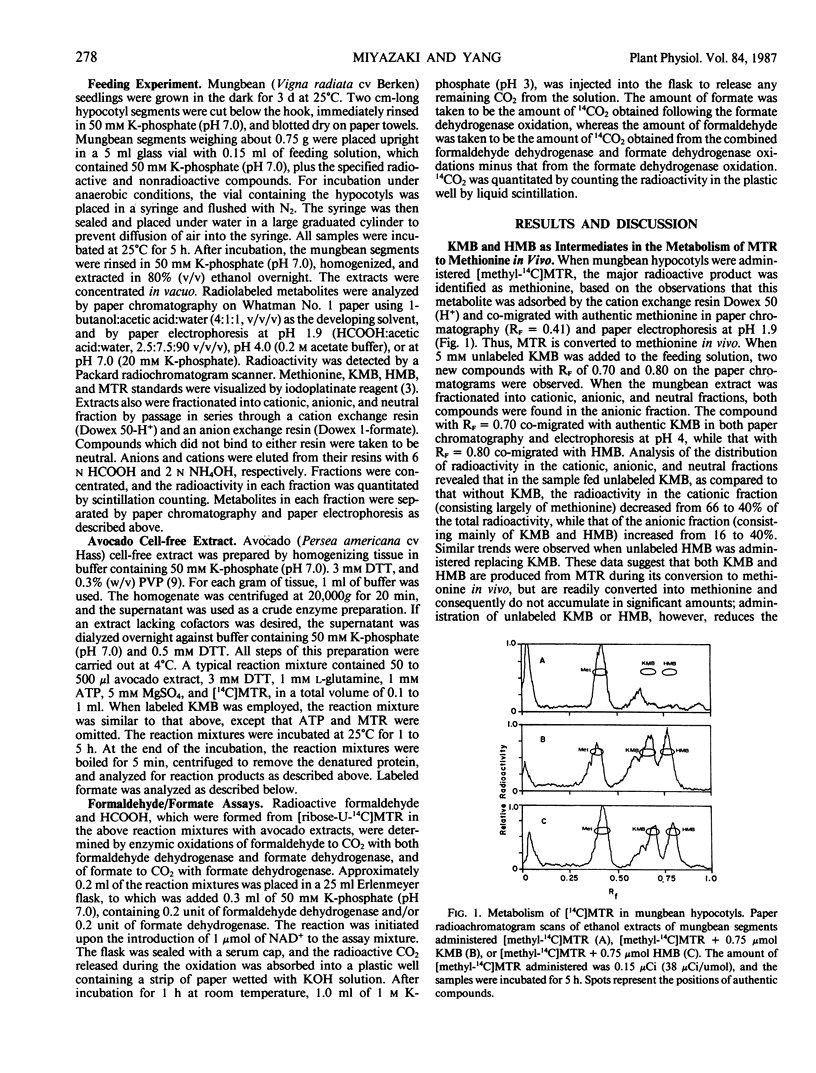
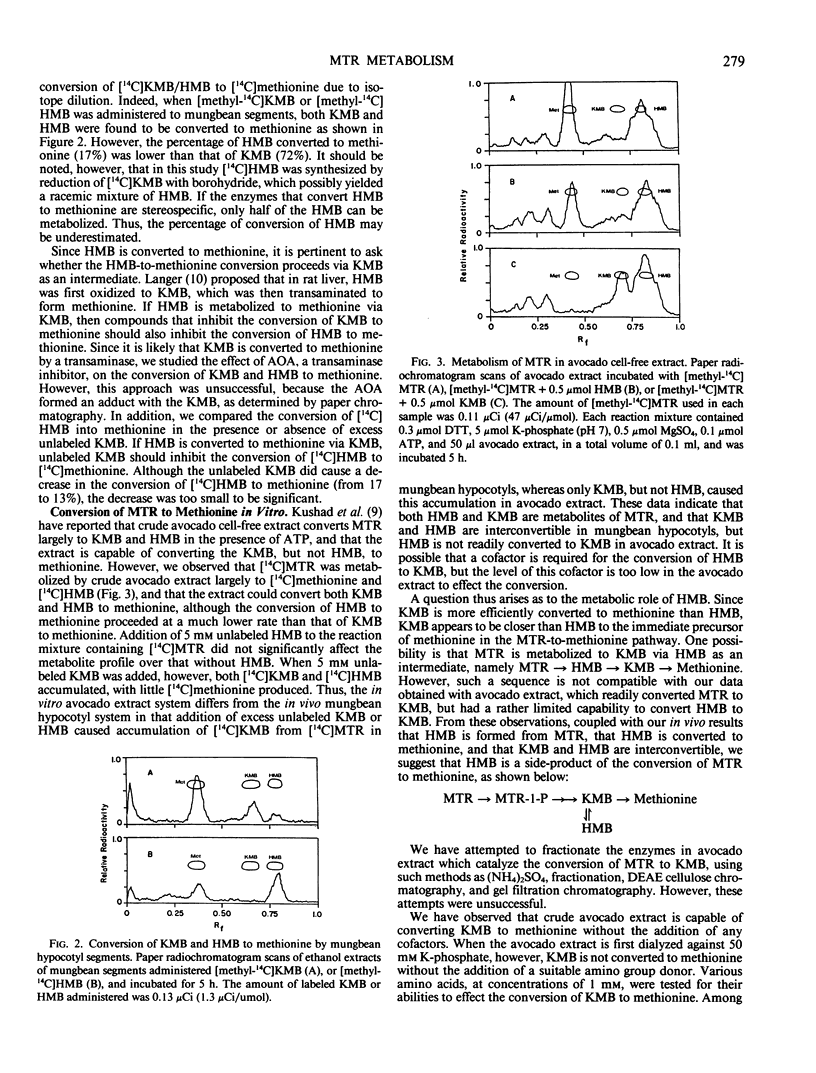
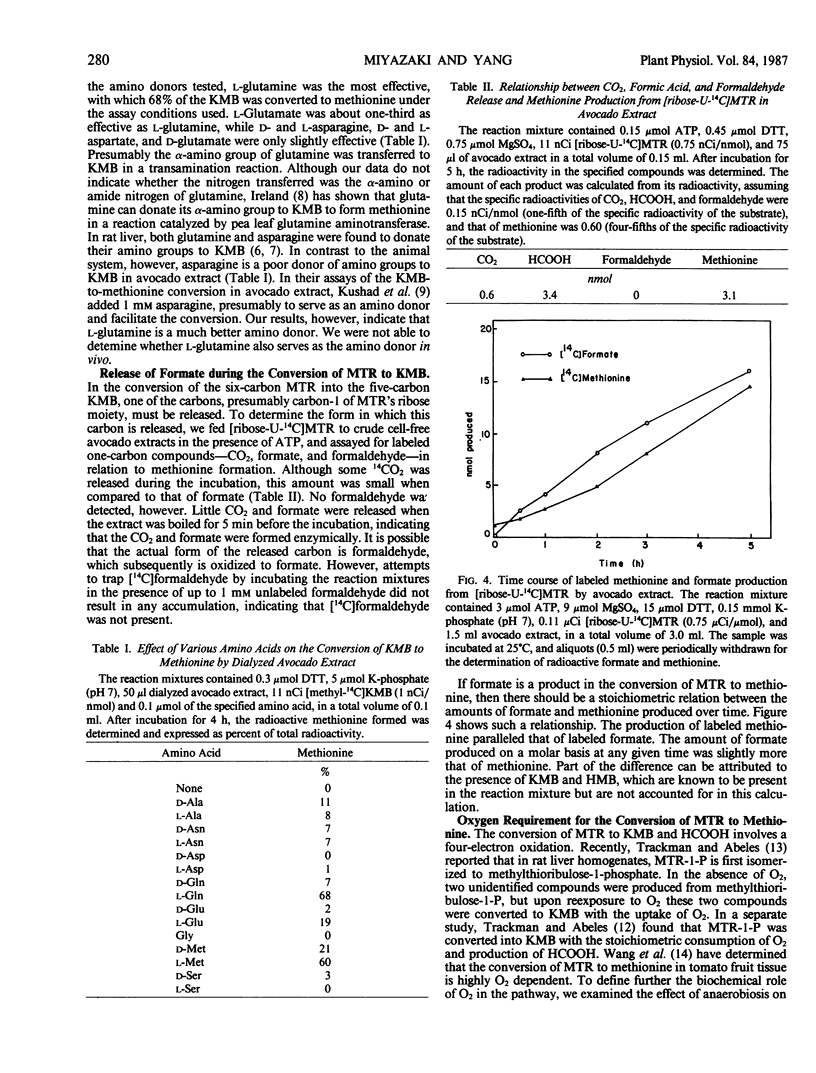
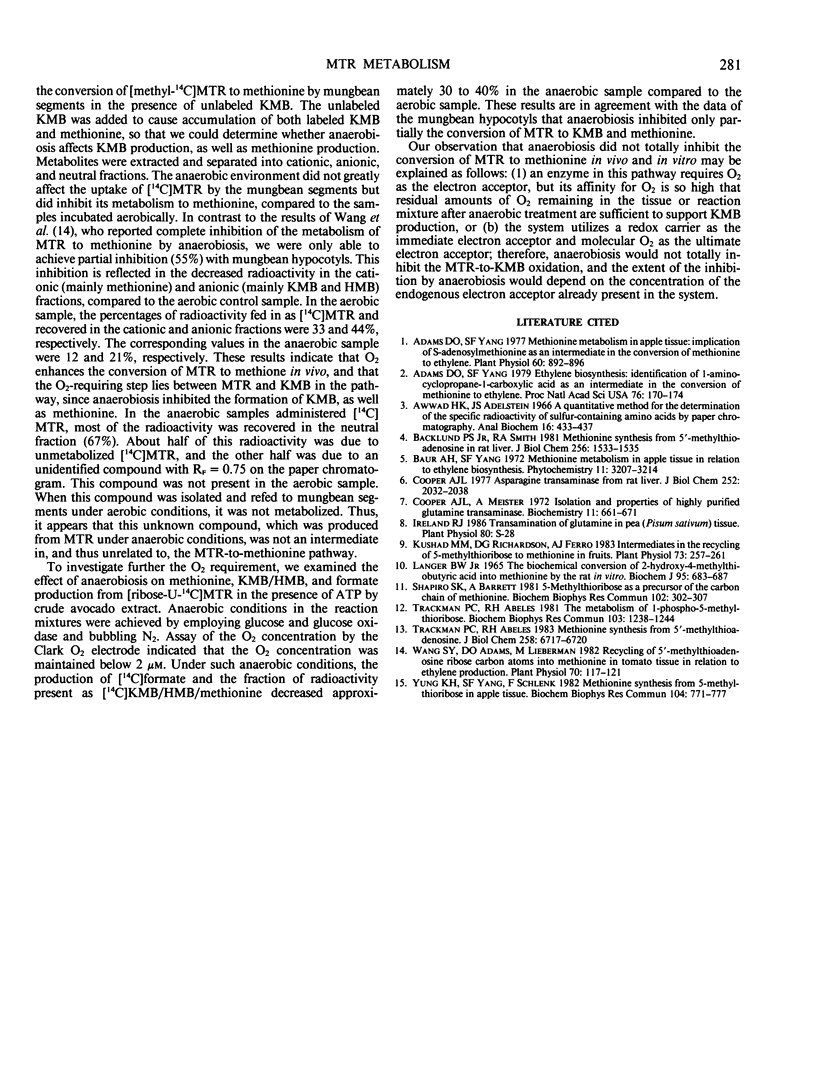
Selected References
These references are in PubMed. This may not be the complete list of references from this article.
- Adams D. O., Yang S. F. Ethylene biosynthesis: Identification of 1-aminocyclopropane-1-carboxylic acid as an intermediate in the conversion of methionine to ethylene. Proc Natl Acad Sci U S A. 1979 Jan;76(1):170–174. doi: 10.1073/pnas.76.1.170. [DOI] [PMC free article] [PubMed] [Google Scholar]
- Adams D. O., Yang S. F. Methionine metabolism in apple tissue: implication of s-adenosylmethionine as an intermediate in the conversion of methionine to ethylene. Plant Physiol. 1977 Dec;60(6):892–896. doi: 10.1104/pp.60.6.892. [DOI] [PMC free article] [PubMed] [Google Scholar]
- Backlund P. S., Jr, Smith R. A. Methionine synthesis from 5'-methylthioadenosine in rat liver. J Biol Chem. 1981 Feb 25;256(4):1533–1535. [PubMed] [Google Scholar]
- Cooper A. J. Asparagine transaminase from rat liver. J Biol Chem. 1977 Mar 25;252(6):2032–2038. [PubMed] [Google Scholar]
- Cooper J. L., Meister A. Isolation and properties of highly purified glutamine transaminase. Biochemistry. 1972 Feb 29;11(5):661–671. doi: 10.1021/bi00755a001. [DOI] [PubMed] [Google Scholar]
- Kushad M. M., Richardson D. G., Ferro A. J. Intermediates in the recycling of 5-methylthioribose to methionine in fruits. Plant Physiol. 1983 Oct;73(2):257–261. doi: 10.1104/pp.73.2.257. [DOI] [PMC free article] [PubMed] [Google Scholar]
- LANER B. W., Jr THE BIOCHEMICAL CONVERSION OF 2-HYDROXY-4-METHYLTHIOBUTYRIC ACID INTO METHIONINE BY THE RAT IN VITRO. Biochem J. 1965 Jun;95:683–687. doi: 10.1042/bj0950683. [DOI] [PMC free article] [PubMed] [Google Scholar]
- Shapiro S. K., Barrett A. 5-Methylthioribose as a precursor of the carbon chain of methionine. Biochem Biophys Res Commun. 1981 Sep 16;102(1):302–307. doi: 10.1016/0006-291x(81)91521-7. [DOI] [PubMed] [Google Scholar]
- Trackman P. C., Abeles R. H. Methionine synthesis from 5'-S-Methylthioadenosine. Resolution of enzyme activities and identification of 1-phospho-5-S methylthioribulose. J Biol Chem. 1983 Jun 10;258(11):6717–6720. [PubMed] [Google Scholar]
- Trackman P. C., Abeles R. H. The metabolism of 1-phospho-5-methylthioribose. Biochem Biophys Res Commun. 1981 Dec 31;103(4):1238–1244. doi: 10.1016/0006-291x(81)90255-2. [DOI] [PubMed] [Google Scholar]
- Wang S. Y., Adams D. O., Lieberman M. Recycling of 5'-methylthioadenosine-ribose carbon atoms into methionine in tomato tissue in relation to ethylene production. Plant Physiol. 1982 Jul;70(1):117–121. doi: 10.1104/pp.70.1.117. [DOI] [PMC free article] [PubMed] [Google Scholar]
- Yung K. H., Yang S. F., Schlenk F. Methionine synthesis from 3-methylthioribose in apple tissue. Biochem Biophys Res Commun. 1982 Jan 29;104(2):771–777. doi: 10.1016/0006-291x(82)90704-5. [DOI] [PubMed] [Google Scholar]


